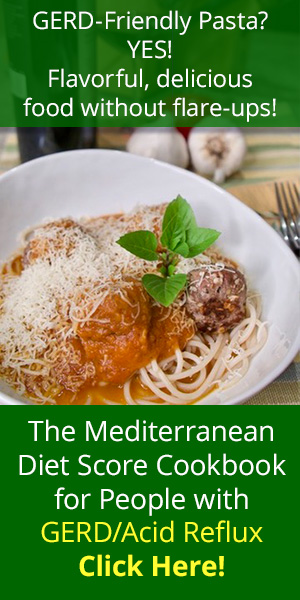Healthy Cooking Columns
Hidden Valley Ranch and Highly Processed Food
Hidden Valley Ranch. (HVR.)
Three words that are a staple of American cupboards because the folks at Hidden Valley Ranch were the originators of Ranch Dressing. The history is pretty well known to foodies: Steve Henson and his wife offered the dressing at their dude ranch in Santa Barbara, the Hidden Valley Ranch. They sold packets of the dressing mix to customers in the area and in the early 1970s they sold their company, the manufacturing facility they had set up, and the dressing, to Clorox (the ranch itself was sold prior to the sale of the dressing company).
Clorox? Weird but true.
The rest is history, and Clorox through the years reformulated the dressing mix and the bottled dressing. People love the flavor, and in truth it does taste pretty good. The dressing is, however, a good look at how our food has evolved from what was likely a good basic buttermilk dressing recipe with a great blend of herbs and spices into a wholly manufactured product that has some very familiar but also many of the obscure ingredients found in highly processed foods.
Here’s the ingredient list:
vegetable oil (soybean and/or canola oil), water, egg yolk, sugar, salt, cultured nonfat buttermilk, natural flavors (milk, soy), spices, dried garlic, dried onion, vinegar, phosphoric acid, xanthan gum, modified food starch, MSG, artificial flavors, disodium phosphate, sorbic acid, calcium disodium EDTA as preservatives, disodium inosinate, disodium guanylate
The first half of the ingredients – the ones in italics to – are pretty familiar. Almost all of them are ingredients you would have in your home except for the mysterious “natural flavors”. I’m never sure what these are, but this is how the Food and Drug Administration defines the term:
The term natural flavor or natural flavoring means the essential oil, oleoresin, essence or extractive, protein hydrolysate, distillate, or any product of roasting, heating or enzymolysis, which contains the flavoring constituents derived from a spice, fruit or fruit juice, vegetable or vegetable juice, edible yeast, herb, bark, bud, root, leaf or similar plant material, meat, seafood, poultry, eggs, dairy products, or fermentation products thereof, whose significant function in food is flavoring rather than nutritional…
Maybe that’s not too nefarious, but it is still pretty vague as to what is in your food. You might have some of those items in your cabinet or fridge, but in the dressing it is not likely in a form that you would recognize. As for the other ingredients, like disodium guanylate, it is unlikely that you have them in your spice drawer.
First is cost. A 20 ounce bottle of HVR at the local grocery goes for $4.99. That’s 2 1/2 cups or 20 two tablespoon servings. Most folks actually use 4 tablespoons, but let’s split the difference at a more reasonable 3 tablespoons for the 20 ounce bottle which is more along the lines of 13 servings or 38 cents a serving.
Here’s what it costs to make your own Ranch Dressing:
| Amount | Ingredient | Cost |
| 1/4 cup | reduce fat mayonnaise | 0.23 |
| 1/2 cup | Greek yogurt, Greek | 0.50 |
| 1/3 cup | reduced fat sour cream | 0.35 |
| 2 Tbsp. | non-fat buttermilk | 0.13 |
| 1 tsp. | white wine vinegar | 0.05 |
| 1/2 tsp. | sugar | 0.01 |
| 1 tsp. | onion powder | 0.13 |
| 1 tsp | garlic powder | 0.13 |
| 1 Tbsp | dried dill | 0.18 |
| 1 Tbsp. | dried chives | 0.18 |
| 1 Tbsp. | dried parsley | 0.18 |
| 1/4 tsp. | salt | 0.01 |
| Total | 0.35 |
Simple. Making your own is cheaper by about 3 cents per portion (less if you shop around a bit). Yes, you have to initially purchase a lot more ingredients than the per serving cost in the analysis above, but these are essential ingredients for your pantry that help you expand your ability to cook for yourself.
We have demonstrated this same lower cost principle of making your own meals rather than from pre-packaged products with these analyses of Hamburger Helper and Rice a Roni.
From a health standpoint does this make all that much difference?
Yes. That little bit of time you spend making your own saves you a whopping 145 calories per three tablespoon serving (210 calories for the HVR and 65 if you make your own). There’s a similar reduction in the amount of salt, at 390 milligrams for the bottled dressing and only 210 if you make it yourself. You also get to choose the type of fat by selecting a mayonnaise made with olive oil rather than the soybean oil or canola oil that the HVR is made with.
The most important part is that your homemade dressing tastes better. A LOT better. Flavor, texture, freshness, no weird aftertaste – it’s all there in your own dressing and much more like the same delicious quality of what Hidden Valley Ranch Dressing started out as back in the 1950s.




